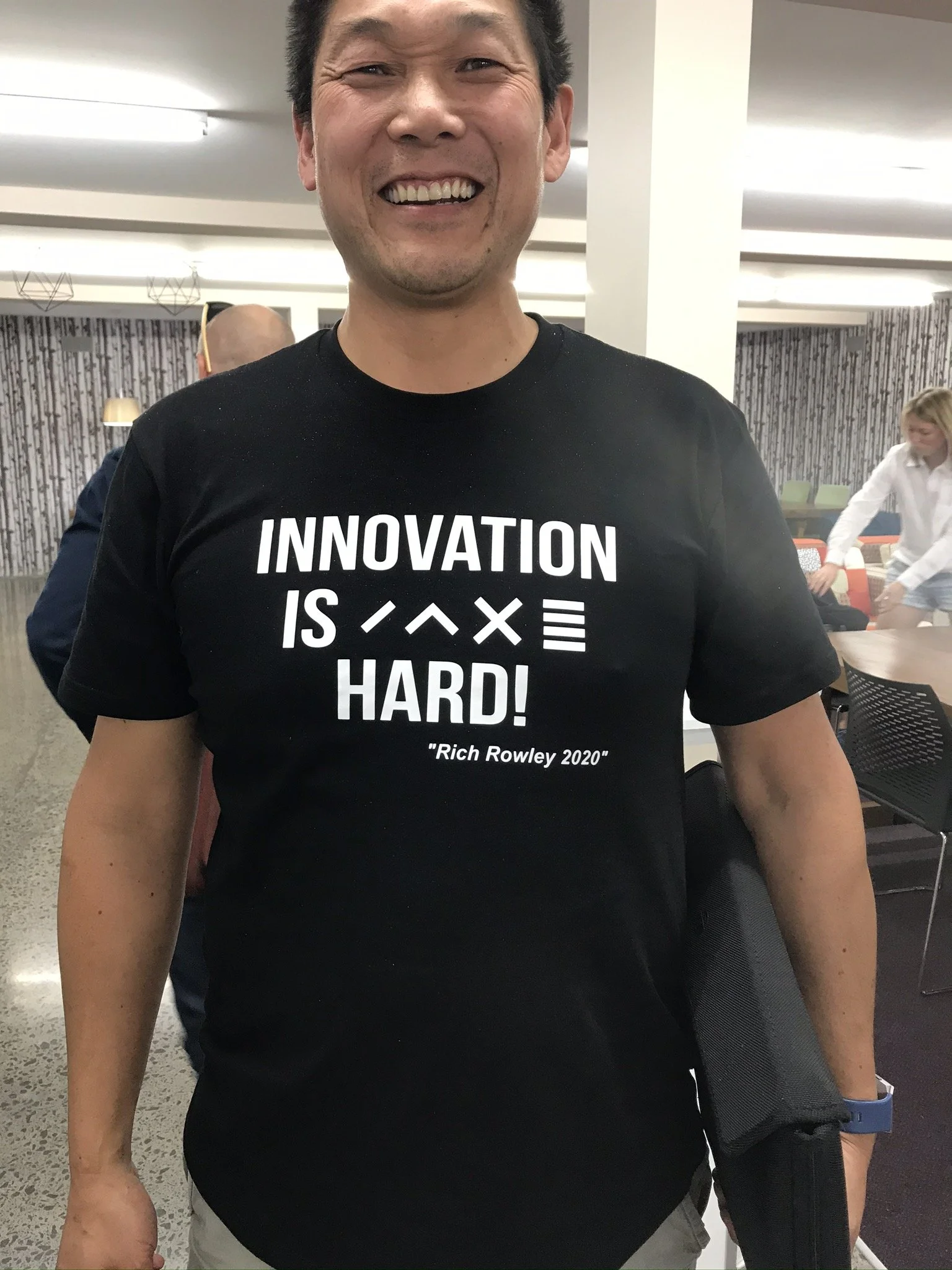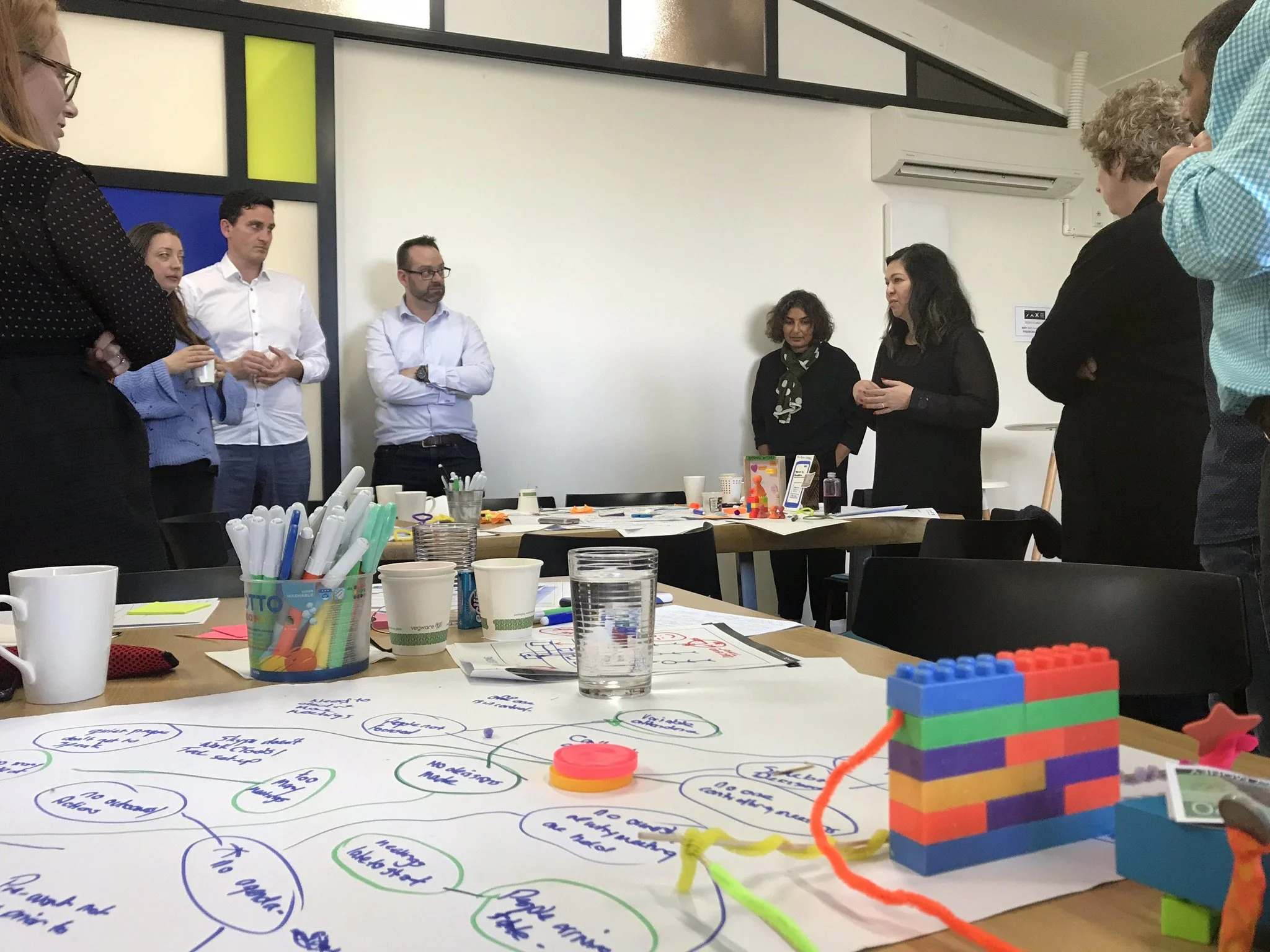Building Tech Futures Lab
How do you build a new business around a problem that’s not yet pressing for your target audience?
It’s 2016. Headlines abound regarding the growing impact of technologies set to change the way we work and live: advances in computing capability, robotics, automation, AI, blockchain, 3D printing and more. The future of work started feeling uncertain and unpredictable in the face of this ever-accelerating change. Mid-career professionals started realising that their formal training had peaked in relevance and would be little help for the next phases of their working life.
In London I had experienced these changes first-hand in a big, globally-connected market. Front-loading education in our younger years was no match for the complicated, dynamic problems we now faced. Education and professional development was lagging behind workforce needs.
Back in NZ, I wanted to get involved with people, businesses and ideas that were solving challenges like this one. That led me to become the first employee and General Manager at Tech Futures Lab (TFL), a new business seeking to wake up and shake up the professional development sector.
My challenge was twofold. First - communicate the need for upskilling. Second - figure out how it should be delivered - at a product level and at an organisational one - so that it was a fit for students’ lives and needs, and created a sustainable business.
What we learned and what we did
Your fit needs fine-tailoring. Our offer needed to sit at the intersection of business and technology. We honed our understanding of our customers - who they were and what they were struggling with. We learned that our niche was people who wanted to shape the impact of emerging tech but didn’t want to be engineers or technicians. There were early adopters who understood the technology and wanted to be part of it (or were already) but perhaps lacked business acumen. Another group was mums returning to the workforce after a career break. They felt the gap between the world they left and the one they were re-entering very keenly. Across both groups were those with a ‘tech for good’ bent, keen to use innovative technologies to address big world problems, like developing a virtual GP platform to make healthcare more accessible. They felt their education choices were short non-accredited courses (which lacked kudos); very technical options like coding academies (too specialised) or traditional, full-time, three to four year degrees (inconvenient and expensive). The common degree ‘go to’ was an MBA but it was seen as dated.
It takes a village. The fledgling venture needed an ecosystem of potential customers and supporters to raise awareness, inform product development and build credibility. Nesting TFL within The Mind Lab (now AcademyEX), which already had a strong reputation in the tech-ed sector, gave us a head start. Forming relationships with large organisations was our next strategic step. Showing how their needs aligned with our vision attracted ten partners - including Microsoft, Datacom, SkyCity, Air New Zealand and IBM - well before launching our product. Through projects and bespoke programmes for organisations we cemented our place as experts, commercially as well as academically. We also ran public workshops and master classes to extract insights, inform design principles, generate revenue and build a pipeline for our MVP, the Master of Technological Futures.
Don’t frighten - enlighten. Early marketing efforts for TFL were not quite ‘robots are coming for your jobs’ but close. Fear turned out to be a poor motivator for the NZ market. People were curious but not enrolling in the numbers we’d hoped for. We changed tack - focussing on what was possible, the advantages of being prepared and not being caught off-guard. We ran Open Labs, offered coffee chats and hosted a MeetUp group to get people in, get them talking and understanding what the programme was all about. An interview was a key part of the application process. Our students - their stories, their faces - became our promoters. Through them we told practical, relatable, positive stories that showed how we could help people explore and address unmet needs and opportunities.
Results
Having found our sweet spot for product-market fit and a tested marketing strategy, we launched the first intake of the Master of Technological Futures within six months. Insights from our customer research and marketing tests informed our flagship Master’s qualification. This one-year programme ticked all the boxes. An intensive, in-person block upfront and project-based final phase with industry advisor support for the remainder, maximised impact and minimised time out of work. It was flexible (students could choose their projects - personal or work-based), business-led and context-driven. We stripped out everything that our students didn’t need grades, exams, lectures - replacing them with practical subject deep-dives, fireside chats with real-world innovators, simulations, and project work.
We solidified our reputation as education innovators. The first Master’s intake gave the green light for future intakes (three per year). We kept refining the delivery, increasing flexibility while maintaining quality, to be even more attractive to working professionals. Student results were outstanding from the start which built trust with regulators and helped get our programmes accredited despite challenging the established way of delivering education. Completion rates were 93% overall (compared to the industry average of 75%) with 100% completion for Maori students. 50% of students were female (compared to an average of 25- 30% in STEM-related study generally). Awards such as Idealog’s Most Innovative Companies - Education validated our approach.
We built a community as well as a customer base. We acted as facilitators of a movement around new ways of learning and the future of work. Customers became part of the business rather than simply people we sold things to. Building deep and enduring relationships with professionals, experts, academics and businesses in NZ and globally (such as AWS and Salesforce) helped build a resilient and sustainable organisation. We became a talent magnet - people came from all over the world to work with us. Partnerships, collaborations and networks developed a broader sense of community - and this connective tissue amplified marketing efforts and our mission.
Ongoing challenges to solve
With every role or project there are things you’d have done differently and questions still to explore and answer:
How do you scale this kind of model globally?
What are other organisations (outside NZ) doing, and what’s working / not working?











